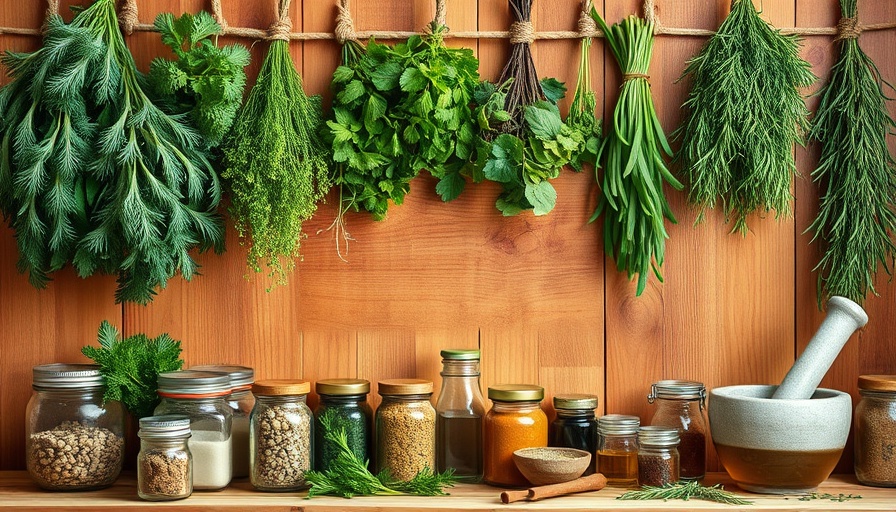
The Rise of Indoor Herb Gardening
In recent years, indoor herb gardens have surged in popularity, becoming not only a centerpiece in kitchens but also a source of self-sufficiency and healthier living. More than just a fashionable trend, these gardens serve as a vital resource for homeowners who want to connect with nature and enhance their culinary experiences. As people navigate busy lifestyles, the convenience of having fresh herbs at arm's reach is an appealing proposition.
Why Grow Herbs Indoors?
Creating an indoor garden offers numerous benefits that cater to health-conscious consumers. Growing your own herbs allows you to avoid pesticides and chemicals commonly found in store-bought alternatives. Moreover, herbs like basil, chives, and mint serve dual purposes—they're not only flavorsome additions to your meals but boast remarkable medicinal properties as well.
Basil: A Culinary Wonder and Medicinal Marvel
Basil, revered in Mediterranean cuisines, stands out not only for its culinary uses but also for its rich medicinal properties. This fragrant herb soothes the mind while offering anti-inflammatory benefits, making it a staple in many households. Nutritionally, it provides essential vitamins A, C, K, and minerals such as magnesium and iron. When planted indoors, basil requires full sun exposure, a rich, moist soil environment, and regular harvesting for optimal growth—perfect for an effortless kitchen garden. Consider planting seeds or clippings to ensure a continuous supply of this versatile herb.
Chives: Flavorful and Functional
Chives, belonging to the Allium family, are another great addition to your indoor garden. Besides enhancing dishes with their mild onion flavor, they naturally repel pests, thanks to their high sulfur content. This feature makes them not only a culinary delight but also a natural remedy for maintaining garden health. Ideal for omelets and vegetable dishes, chives thrive with minimal care and can be easily grown from seeds or store-bought plants. The appeal of this herb lies in its practicality, providing a fresh touch to your meals.
Mint: Refreshing and Revitalizing
Mint is synonymous with freshness, enhancing beverages, desserts, and savory dishes alike. Its soothing aroma extends beyond culinary uses; mint is well known for its digestive benefits and calming properties. This herb grows robustly indoors, thriving in well-drained soil and bright light. Regular harvesting encourages bushier growth, allowing you to enjoy its vibrant leaves seasonally. Whether brewed as tea or blended in a smoothie, mint's versatility makes it an essential herb for any indoor garden.
Tips for Successful Indoor Herb Gardening
To ensure your indoor garden flourishes, start with a few fundamental tips:
- Light Requirements: Ensure your herbs receive ample sunlight. Consider placing them near a window or supplementing with grow lights if necessary.
- Watering Wisely: Overwatering is a common mistake. Maintain soil moisture while allowing proper drainage to prevent root rot.
- Fertilization: Incorporate compost or organic fertilizers to provide essential nutrients, facilitating healthy growth.
Community Engagement and the DIY Spirit
As the trend of indoor gardening continues, it ties into a larger community spirit aiming toward sustainability. Engaging in urban farming initiatives or sharing tips with friends and neighbors not only fosters connections but also inspires more individuals to take action.
Conclusion
The shift towards indoor gardening highlights a profound interest in self-sufficiency and sustainable living. By cultivating your own herbs, not only do you enhance your cooking but also contribute positively to your well-being and environment. Whether you're a novice or seasoned gardener, incorporating an indoor herb garden into your lifestyle can yield rewarding results. Embrace this journey and discover the joys of growing your own food!
 Add Row
Add Row  Add
Add 




 Add Row
Add Row  Add
Add 

Write A Comment